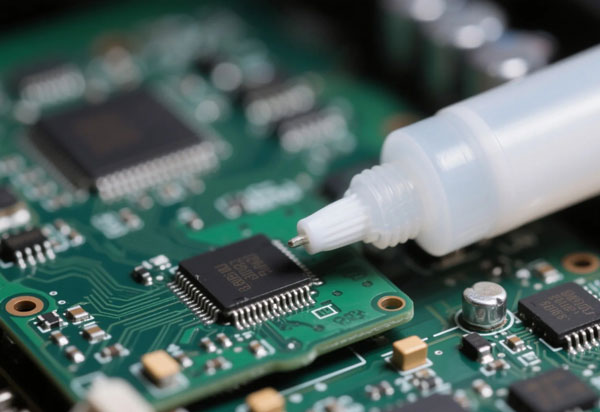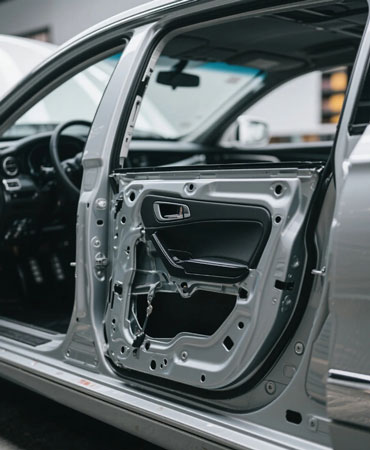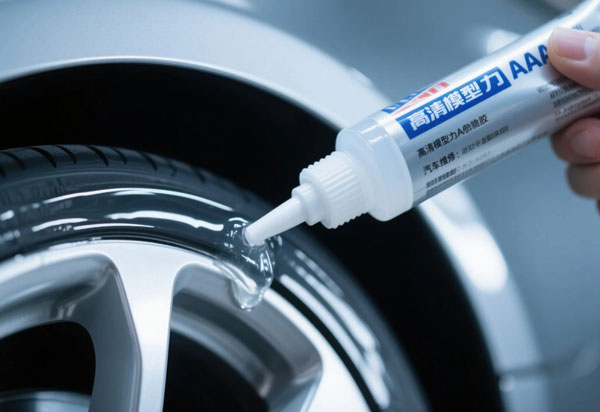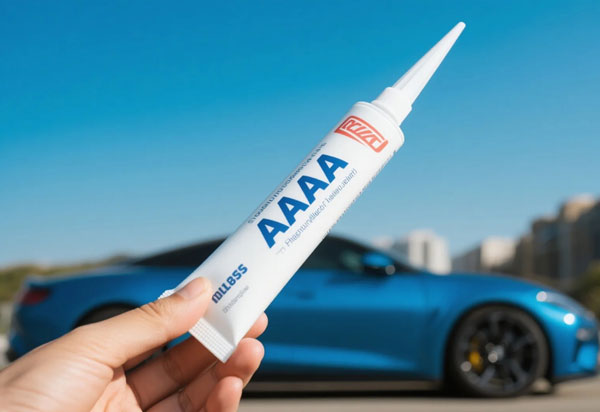 Home / News / Industry News / Are automotive body adhesives suitable for high and low temperature environments?
Home / News / Industry News / Are automotive body adhesives suitable for high and low temperature environments? 2025-08-07
In modern automotive manufacturing, automotive body adhesives have become an essential material for structural joints. Compared to traditional welding or riveting, adhesives not only reduce vehicle weight but also provide excellent sealing, corrosion protection, and fatigue resistance. However, as vehicles are used in increasingly diverse areas, they face challenges ranging from extremely cold environments as low as -10°C to temperatures as high as 70°C or 80°C. So, are automotive body adhesives suitable for both high and low-temperature environments? This article will provide an in-depth analysis of material properties, application performance, testing standards, and selection recommendations.
There are many types of automotive adhesives, including epoxy, polyurethane, acrylic, and butyl adhesives. Each type of adhesive has different operating temperature ranges and performance characteristics. The following are the temperature resistance ranges of several common automotive adhesives:
As can be seen, most structural automotive adhesives have excellent high and low temperature adaptability, maintaining strength and bond stability in environments ranging from -10°C to temperatures approaching 200°C.

2.1 Thermal Stability
In high-temperature environments (such as deserts and near engine compartments), adhesives must exhibit excellent thermal stability, preventing softening, flowing, degradation, or debonding. The high-temperature resistance of automotive body adhesives is primarily evaluated using the following metrics:
Glass transition temperature (Tg): A high Tg value indicates that the material maintains rigidity at elevated temperatures;
Thermogravimetric analysis (TGA): This is used to measure mass loss during heating;
Thermal cycling testing: This simulates actual conditions of alternating high temperatures and cooling to assess the structural integrity of the adhesive.
Some high-performance epoxy adhesives have a Tg exceeding 150°C and can withstand temperatures of 160-180°C for extended periods, meeting the requirements of most OEMs for high-temperature areas such as the hood and body frame.
2.2 Thermal Expansion Compatibility
The body structure incorporates a variety of materials, including steel, aluminum alloy, and plastic, each with varying coefficients of thermal expansion. High-quality adhesives should exhibit a certain degree of flexibility and elasticity, ensuring a secure bond without peeling or breaking even when subjected to high-temperature deformation.
3.1 Risk of Low-Temperature Brittleness
At temperatures of -20°C or lower, some adhesives may experience brittle cracking and decreased adhesion. This is especially true in cold regions, such as Russia and northern Canada, where vehicles often experience temperatures of -30°C during winter. Therefore, adhesives must exhibit exceptionally strong low-temperature toughness and peel strength.
3.2 Cost and Formulation Control
Improving low-temperature resistance typically requires a more complex material formulation and higher costs. For example, adding rubber modifiers and flexible plasticizers can help improve flexibility and ductility at low temperatures.
Based on actual application feedback, high-quality automotive structural adhesives can maintain over 80% of their shear strength at -40°C, making them reliable in extremely cold environments.
In the global automotive market, climate differences between countries place higher demands on body adhesives. For example:
The Middle East: Ambient temperatures consistently exceed 45°C year-round, placing extremely high demands on adhesives' high-temperature aging resistance.
Northern Europe/Siberia: Temperatures below -30°C for extended periods test the adhesive's low-temperature impact toughness.
Tropical coastal regions: High temperatures, high humidity, and high salinity can easily lead to interfacial corrosion.
To address this, many automotive structural adhesive manufacturers have introduced high-performance adhesive solutions suitable for extreme climates, such as:
Two-component epoxy adhesive + flexible curing agent combination: High- and low-temperature resistance and high strength.
Modified polyurethane adhesive: Excellent water resistance, suitable for high-humidity environments.
Hybrid acrylic adhesive: Combines heat and weather resistance with fast curing.
Most OEMs establish a rigorous set of testing standards to verify the environmental suitability of automotive adhesives, including:
Thermal cycling test (-40°C to +85°C for hundreds of cycles)
Hot and cold shock test
High-temperature aging test (80°C for 500 hours)
Salt spray test
Damp heat test
These tests comprehensively evaluate the adhesive's reliability under conditions such as high-temperature aging, low-temperature brittle cracking, moisture effects, and salt corrosion, effectively identifying automotive adhesives truly suitable for all-weather applications.
Case 1: Tesla Model Y Battery Pack Structural Adhesive
Tesla uses a high-performance epoxy structural adhesive to bond the battery module to the housing, providing electrical insulation and thermal conductivity. After thermal shock testing (-40°C to +85°C for 500 cycles), the structural adhesive maintained excellent bond strength and insulation properties. Case Study 2: Volkswagen's Adhesive Application in Extreme Cold Tests
At a cold-zone test facility in northern Sweden, Volkswagen vehicles were required to start and complete driving tests at temperatures below -30°C. Test results showed that the window structural adhesive and glass sealant exhibited no cracking or detachment at extremely low temperatures, demonstrating their reliability in such extreme low-temperature environments.
When selecting automotive adhesives suitable for high- and low-temperature environments, purchasers or engineers should focus on the following parameters:
Operating Temperature Range
Glass Transition Temperature (Tg): The higher the temperature, the better the heat resistance
Coefficient of Thermal Expansion (CTE): Influences the material's thermal stress response
Shear Strength and Peel Strength: Bond stability after temperature fluctuations
Aging Life: Whether it can withstand prolonged thermal cycling
Flexibility and Elastic Modulus: Whether it can maintain elasticity at low temperatures
In summary, modern automotive body adhesives have demonstrated excellent high- and low-temperature adaptability. High-quality structural adhesives maintain excellent bond strength and flexibility between -40°C and +180°C, meeting the demands of automotive operation in diverse climates worldwide. Whether navigating extreme winters or scorching summers, automotive adhesives demonstrate strong environmental adaptability.
If you are a technical leader at an automotive company, a purchasing manager at an OEM, or an automotive parts manufacturer, we recommend considering the following when selecting adhesives:
Understand the product's mechanical performance data at high and low temperatures;
Clarify the operating environment of the target application;
Choose brands with certified and field-proven products;
Seek technical support that can provide customized formulations.
The continuous development of the automotive industry is driving the continuous advancement of materials technology. We believe that the next generation of automotive body adhesives will be more lightweight, environmentally friendly, and adaptable to all weather conditions, providing safer and more reliable structural connections for vehicles.
If you are looking for automotive adhesives with high and low temperature performance, or require a customized automotive adhesive solution, please contact our professional team. We will recommend the most suitable product type and application recommendations based on your application scenario.



